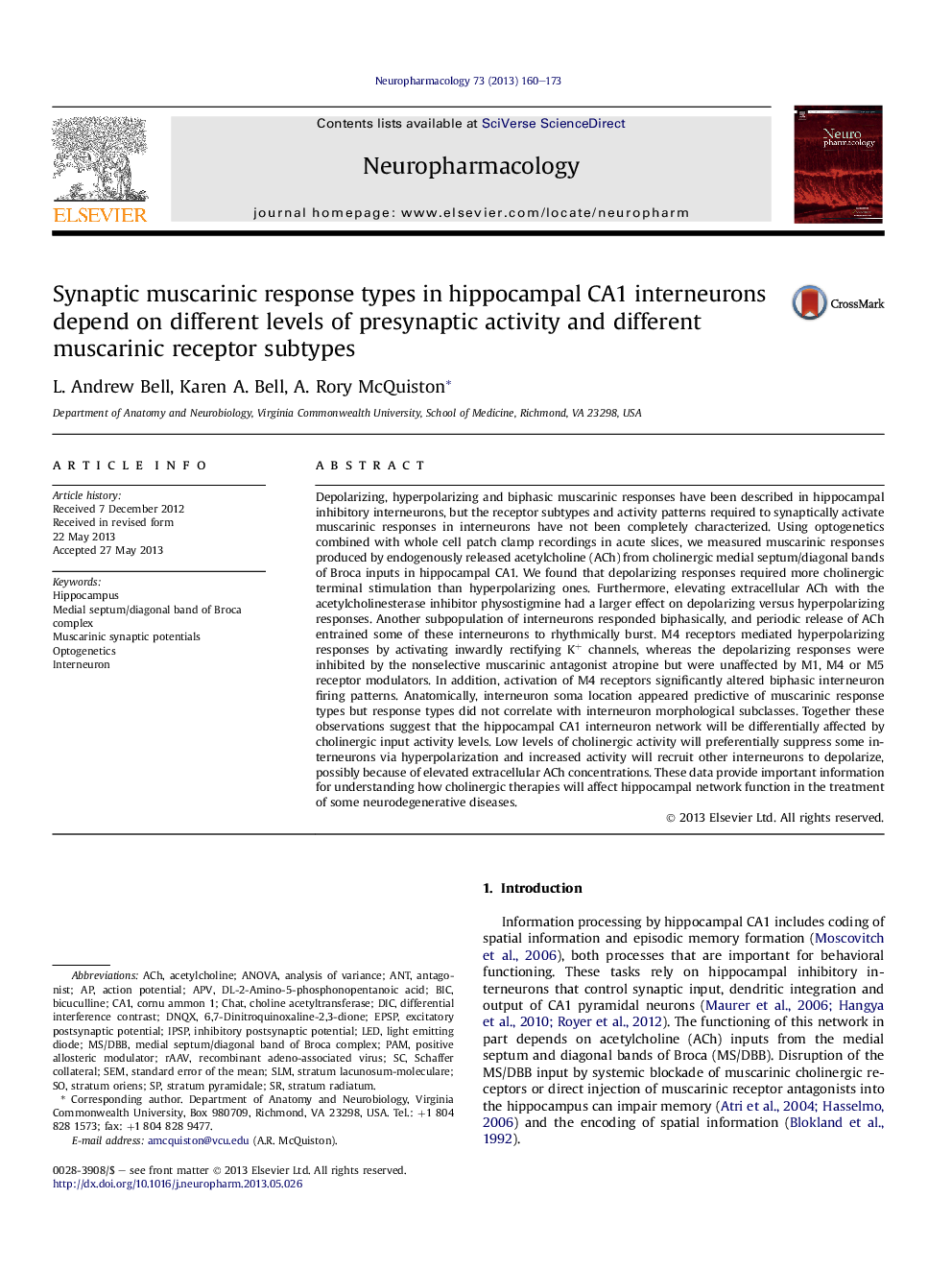| کد مقاله | کد نشریه | سال انتشار | مقاله انگلیسی | نسخه تمام متن |
|---|---|---|---|---|
| 5814933 | 1556640 | 2013 | 14 صفحه PDF | دانلود رایگان |

• Varying presynaptic activity produces different interneuron muscarinic responses.
• Presynaptic cholinergic activity patterns can dynamically control interneurons.
• Muscarinic response types have different sensitivities to acetylcholinesterase.
• M4 muscarinic receptors mediate synaptic muscarinic hyperpolarizations.
• Depolarizing muscarinic responses are not mediated by M1, M4, or M5 receptors.
Depolarizing, hyperpolarizing and biphasic muscarinic responses have been described in hippocampal inhibitory interneurons, but the receptor subtypes and activity patterns required to synaptically activate muscarinic responses in interneurons have not been completely characterized. Using optogenetics combined with whole cell patch clamp recordings in acute slices, we measured muscarinic responses produced by endogenously released acetylcholine (ACh) from cholinergic medial septum/diagonal bands of Broca inputs in hippocampal CA1. We found that depolarizing responses required more cholinergic terminal stimulation than hyperpolarizing ones. Furthermore, elevating extracellular ACh with the acetylcholinesterase inhibitor physostigmine had a larger effect on depolarizing versus hyperpolarizing responses. Another subpopulation of interneurons responded biphasically, and periodic release of ACh entrained some of these interneurons to rhythmically burst. M4 receptors mediated hyperpolarizing responses by activating inwardly rectifying K+ channels, whereas the depolarizing responses were inhibited by the nonselective muscarinic antagonist atropine but were unaffected by M1, M4 or M5 receptor modulators. In addition, activation of M4 receptors significantly altered biphasic interneuron firing patterns. Anatomically, interneuron soma location appeared predictive of muscarinic response types but response types did not correlate with interneuron morphological subclasses. Together these observations suggest that the hippocampal CA1 interneuron network will be differentially affected by cholinergic input activity levels. Low levels of cholinergic activity will preferentially suppress some interneurons via hyperpolarization and increased activity will recruit other interneurons to depolarize, possibly because of elevated extracellular ACh concentrations. These data provide important information for understanding how cholinergic therapies will affect hippocampal network function in the treatment of some neurodegenerative diseases.
Journal: Neuropharmacology - Volume 73, October 2013, Pages 160–173